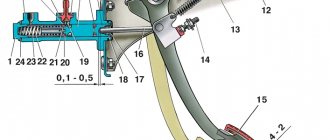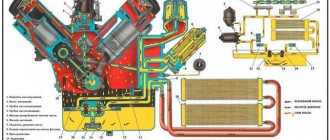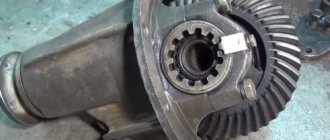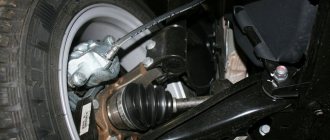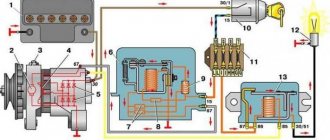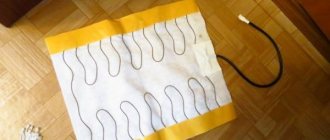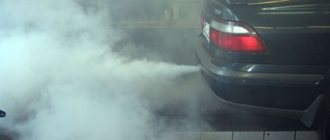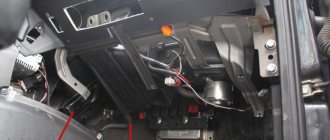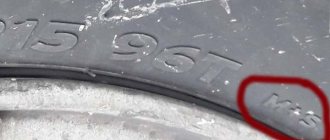Reason #1. Grease getting on hot engine parts
Smoke coming from under the hood is not yet a reason to look for a problem.
Sometimes it’s enough to remember what work was done on the engine the day before. In the vast majority of cases, a burning smell appears after an oil change and does not at all indicate that it is of poor quality. Vapors of burnt lubricant arise from contact with hot parts of the engine. As it evaporates, it begins to stink both near the car and in the cabin, especially when the air conditioning fan is turned on. However, very little time will pass and there will be no more evaporation, which means that the fumes will also pass.
In the vast majority of cases, oil ends up on exhaust system parts, such as the catalyst. Here's an example: the oil filter on some engines is located above the catalyst. Any mistake when changing the filter element leads to waste entering the catalytic converter. Depending on the volume of the spill, the smell may disappear quickly or not at all.
Owners of cars with such engines recommend protecting exhaust system parts during routine maintenance. For example, place a cut plastic bottle on a section where lubricant is likely to come into contact. As a last resort, you can throw a piece of rags under the leak.
In the same way, lubricant can get into the exhaust during engine malfunctions, when oil systematically flows onto, say, a catalyst. This can happen due to a serious leak, for example due to a lack of sealant between the valve cover and the cylinder head.
Similar consequences are caused by overheating of the engine when the cylinder head “drives”, and at the junction of the cylinder head and cylinder block, the gasket ceases to cope with its functions, causing oil to begin to leak out. We cannot exclude problems with the oil heat exchanger, which on some machines is located just above the catalyst.
For older cars with power steering, you can add a hydraulic steering system to the list. Hydraulic lines often run close to the exhaust tract, causing any leaks to leak grease into the exhaust. It is quite difficult to distinguish which oil is smoking - hydraulic, transmission or motor.
Ways to deal with unpleasant odors in your car
To get rid of unpleasant odors in the car interior, various methods are used - from folk remedies to serious professional measures. For example, the acrid smell of gasoline, like the smell of oil, is not so easy to eliminate even after repairing the breakdown.
Priority measures
Initially, they try to detect the source of the aroma and take measures that can be carried out independently, without the involvement of additional workers and funds. Follow the following step-by-step instructions:
- Remove all foreign objects from the interior, remove mats and covers, and wash them.
- Vacuum surfaces.
- Clean upholstery and flooring. If the contamination is visible and strong, use chemicals.
- Wash all plastic and polymer parts with warm water.
- Leave the car with the doors and trunk open for a couple of hours to ventilate the interior.
Traditional methods
Traditional methods are also used to combat unpleasant odors in car interiors. Some of the most effective means are:
- Baking soda. Simply rub the product into the interior trim and leave overnight. In the morning, remove the soda with a vacuum cleaner. Wipe metal or plastic parts with a solution of baking soda and water.
- Vinegar. Leave a glass of vinegar on the carpet in the cabin overnight. Ventilate in the morning and repeat the procedure throughout the week.
- Activated carbon. Pour the charcoal into small containers and place it in several places in the cabin. Leave for 2-3 days. The tablets will absorb excess odors.
- Ammonia. Powerful adsorbent. Take 10-15 ml of the product and place it in the salon overnight. Ventilate in the morning. Repeat the procedure for a week.
- Coffee beans. Excellent for eliminating gasoline odor. Sprinkle coffee beans on the area where there is a particularly strong smell of gasoline, cover and seal with tape, and leave for several days. Another way is to place the coffee grounds in a container and leave them on the front panel overnight. Ventilate the interior in the morning.
- Vanilla. Split the vanilla beans in half, scoop out the contents and place them on a cotton swab. Place tampons in several places in the cabin. The pleasant vanilla aroma will stay in the car for about a week.
Car flavors
Interior fragrances do a good job, but only if the smell is not very pronounced. Essentially, fragrances are designed to maintain a fresh or pleasant aroma in the cabin, or to deal with the residual effect after eliminating the root cause of the unpleasant odor.
The products are available in the following forms:
- gel;
- granules;
- solutions;
- aerosols;
- cardboard figures.
When choosing flavors for your car, you need to remember that:
jasmine, chamomile and lavender dull the driver's attention; coffee and lemon, on the contrary, help to concentrate; sea aromas help to relax and soothe; cinnamon and pepper invigorate.
Interior cleaning (wet cleaning) with special means
Wet cleaning is done using products specifically designed for leatherette/eco leather, artificial suede and plastic. Use:
- textile cleaning sprays;
- solutions for washing instrument panels;
- solutions for cleaning rugs;
- upholstery concentrates;
- products for plastic.
Carry out wet cleaning according to the following instructions:
- Shake out rugs from the floor and wash them in soapy water or a product intended for rubber products.
- Use a special vacuum cleaner to remove dust on seats and surfaces.
- Spray the upholstery cleaning spray (the type of spray depends on the type of upholstery), remove the residue with a napkin.
- Clean the windows and instrument panel from dirt.
- After all procedures, spray an air freshener in the cabin or use vanilla/coffee to give the cabin a pleasant aroma.
Ozonation.
The procedure is used if waste products of bacteria and other microorganisms have impregnated the upholstery in such a way that the odor cannot be removed using the above methods. The service is provided at car repair shops and is quite expensive.
The procedure is carried out as follows:
- An ozone generator - an oxygen cylinder - is placed in the car interior.
- Turn on the ventilation system in recirculation mode.
- After 20 minutes, the ventilation system is turned off, and the ozone generator continues to operate for another 15 minutes.
- Ventilate the car and carry out wet cleaning.
The smell of ozone will remain in the cabin for several more days, but it does not pose a threat to human life.
Reason #2. Excessive engine oil consumption
Often complaints about the smell of burnt oil are chaotic. Symptoms usually appear after running the engine at high speeds and disappear over time. Usually in this case the reason is not an oil leak, but the release of crankcase gases. And the goal here is just to find a siphoning place.
At high speeds, any engine wastes oil. In addition, the pressure of crankcase and exhaust gases increases. Under these conditions, standard systems work to the limit and gases are looking for additional places to escape. A poor-quality, loosely compressed or old gasket will not resist pressure, causing gases to enter the engine compartment, and from there into the interior.
This situation may well happen to both key seals of engine parts and the exhaust system. For example, a poorly sealed joint between the resonator and the catalyst. Or a loose ring between the muffler and the resonator.
Burnt carpet smell
This “aroma” indicates that for some reason the pads began to press against the brake disc (drum) and, overheating, “burn” against it.
A common and common reason is that you have not fully released the car from the handbrake.
Another reason could be stuck brake calipers.
Diagnosing a problem with brake pads is quite simple: after the trip, carefully touch the wheel rims so as not to get burned. If one of them is clearly hotter than the others, the problem is in the brakes of that wheel. Then you can lift the car on a jack and spin the wheel with the brake and handbrake released. If it turns hard, something is wrong with the pads or caliper.
The problem needs to be fixed as quickly as possible. Non-critical overheating of the brakes leads to increased wear of the pads. But if there is serious overheating, the brake hoses can burn out. Then there is a brake fluid leak and a direct threat to the life of the driver and passenger.
Transmission oil splashes
Oddly enough, the gearbox and all-wheel drive elements in this case can also be the reason. The mechanics of the result are the same - the lubricant gets into the exhaust and begins to burn. This can happen either due to splashing or due to normal runoff.
In most cases, transmission oil comes out through the breather. This happens either from foaming or from overflowing. The transfer case is often located above the exhaust system and any oil leaks lead to it getting on the hot parts of the exhaust.
Are you following the manufacturer's instructions?
There is one valuable recommendation in this regard in the vehicle operating instructions. It sounds something like this: Don't drive through deep puddles at high speed. Additionally, the maximum depth may be indicated and clarifying measures may be provided.
There is plenty of harm from overcoming puddles at high speed. First of all, cold water harms the catalyst. A sudden temperature change can cause the element body to crack. Finally, various dirt and petroleum products in the puddle, getting on the parts of the exhaust system, begin to smell pretty bad. The smell is exactly like the aroma of burnt oil, and successfully penetrates into the salon.
Taking this fact into account, at the stage of identifying the causes, it is important to determine in what weather the burning smell appears. If only in the wet, but in the dry everything is fine - there is no reason to worry. This road dirt ends up in the exhaust.
Ways to deal with unpleasant odors in your car
To get rid of unpleasant odors in the car interior, various methods are used - from folk remedies to serious professional measures. For example, the acrid smell of gasoline, like the smell of oil, is not so easy to eliminate even after repairing the breakdown.
Priority measures
Initially, they try to detect the source of the aroma and take measures that can be carried out independently, without the involvement of additional workers and funds. Follow the following step-by-step instructions:
- Remove all foreign objects from the interior, remove mats and covers, and wash them.
- Vacuum surfaces.
- Clean upholstery and flooring. If the contamination is visible and strong, use chemicals.
- Wash all plastic and polymer parts with warm water.
- Leave the car with the doors and trunk open for a couple of hours to ventilate the interior.
Traditional methods
Traditional methods are also used to combat unpleasant odors in car interiors. Some of the most effective means are:
- Baking soda. Simply rub the product into the interior trim and leave overnight. In the morning, remove the soda with a vacuum cleaner. Wipe metal or plastic parts with a solution of baking soda and water.
- Vinegar. Leave a glass of vinegar on the carpet in the cabin overnight. Ventilate in the morning and repeat the procedure throughout the week.
- Activated carbon. Pour the charcoal into small containers and place it in several places in the cabin. Leave for 2-3 days. The tablets will absorb excess odors.
- Ammonia. Powerful adsorbent. Take 10-15 ml of the product and place it in the salon overnight. Ventilate in the morning. Repeat the procedure for a week.
- Coffee beans. Excellent for eliminating gasoline odor. Sprinkle coffee beans on the area where there is a particularly strong smell of gasoline, cover and seal with tape, and leave for several days. Another way is to place the coffee grounds in a container and leave them on the front panel overnight. Ventilate the interior in the morning.
- Vanilla. Split the vanilla beans in half, scoop out the contents and place them on a cotton swab. Place tampons in several places in the cabin. The pleasant vanilla aroma will stay in the car for about a week.
Car flavors
Interior fragrances do a good job, but only if the smell is not very pronounced. Essentially, fragrances are designed to maintain a fresh or pleasant aroma in the cabin, or to deal with the residual effect after eliminating the root cause of the unpleasant odor.
The products are available in the following forms:
- gel;
- granules;
- solutions;
- aerosols;
- cardboard figures.
When choosing flavors for your car, you need to remember that:
jasmine, chamomile and lavender dull the driver's attention; coffee and lemon, on the contrary, help to concentrate; sea aromas help to relax and soothe; cinnamon and pepper invigorate.
Interior cleaning (wet cleaning) with special means
Wet cleaning is done using products specifically designed for leatherette/eco leather, artificial suede and plastic. Use:
- textile cleaning sprays;
- solutions for washing instrument panels;
- solutions for cleaning rugs;
- upholstery concentrates;
- products for plastic.
Carry out wet cleaning according to the following instructions:
- Shake out rugs from the floor and wash them in soapy water or a product intended for rubber products.
- Use a special vacuum cleaner to remove dust on seats and surfaces.
- Spray the upholstery cleaning spray (the type of spray depends on the type of upholstery), remove the residue with a napkin.
- Clean the windows and instrument panel from dirt.
- After all procedures, spray an air freshener in the cabin or use vanilla/coffee to give the cabin a pleasant aroma.
Ozonation.
The procedure is used if waste products of bacteria and other microorganisms have impregnated the upholstery in such a way that the odor cannot be removed using the above methods. The service is provided at car repair shops and is quite expensive.
The procedure is carried out as follows:
- An ozone generator - an oxygen cylinder - is placed in the car interior.
- Turn on the ventilation system in recirculation mode.
- After 20 minutes, the ventilation system is turned off, and the ozone generator continues to operate for another 15 minutes.
- Ventilate the car and carry out wet cleaning.
The smell of ozone will remain in the cabin for several more days, but it does not pose a threat to human life.
